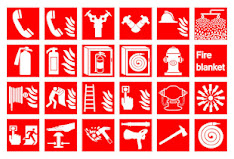Fire pump
Fire Pump
Fire pumps are powered most commonly by an electric motor or a diesel engine, or, occasionally a steam turbine. If the governing model building code requires backup power independent of the local electric power grid, a fire pump using an electric motor may utilize an emergency generator when connected via a listed transfer switch. Fire pumps installed on fire trucks and boats are powered by the engine of the vehicle/vessel.
Utilizing a control panel with pressure sensors, fire pumps automatically start when the pressure in the fire sprinkler system drops below a pre-designated threshold. Given the incompressibility of water, fire suppression system pressures drops significantly and quickly when one or more outlets open. Examples would be fused (opened) fire sprinklers, fire hose valves connected to a standpipe, or automatic control valves opened by release panels.
Fire pumps are utilized when determined by hydraulic calculations that the existing water supply cannot provide sufficient pressure to meet the hydraulic design requirements of the suppression system. This usually occurs if the building is very tall, such as in high-rise buildings (to overcome hydraulic head losses created from elevation differences), in systems that require a relatively high terminal pressure at the fire suppression outlets (to provide sufficient water droplet penetration of a fire plume), or in systems that require a large discharge of water (such as storage warehouses). Fire pumps are also needed if fire protection water supply is provided from a static source which provides little or no pressure. Some situations may be compounded by all of these factors, requiring large water supplies and powerful fire pumps.
Common types of fire pumps used for fire service include: horizontal split case, vertical split case, vertical inline, vertical turbine, and end suction.








Post a Comment